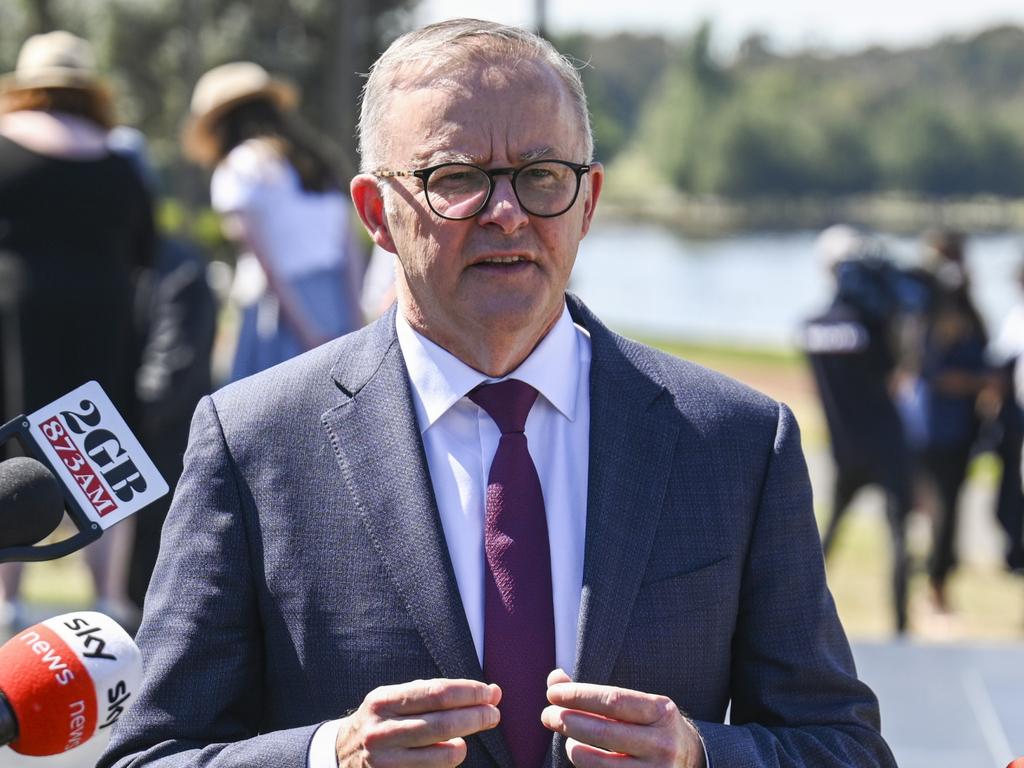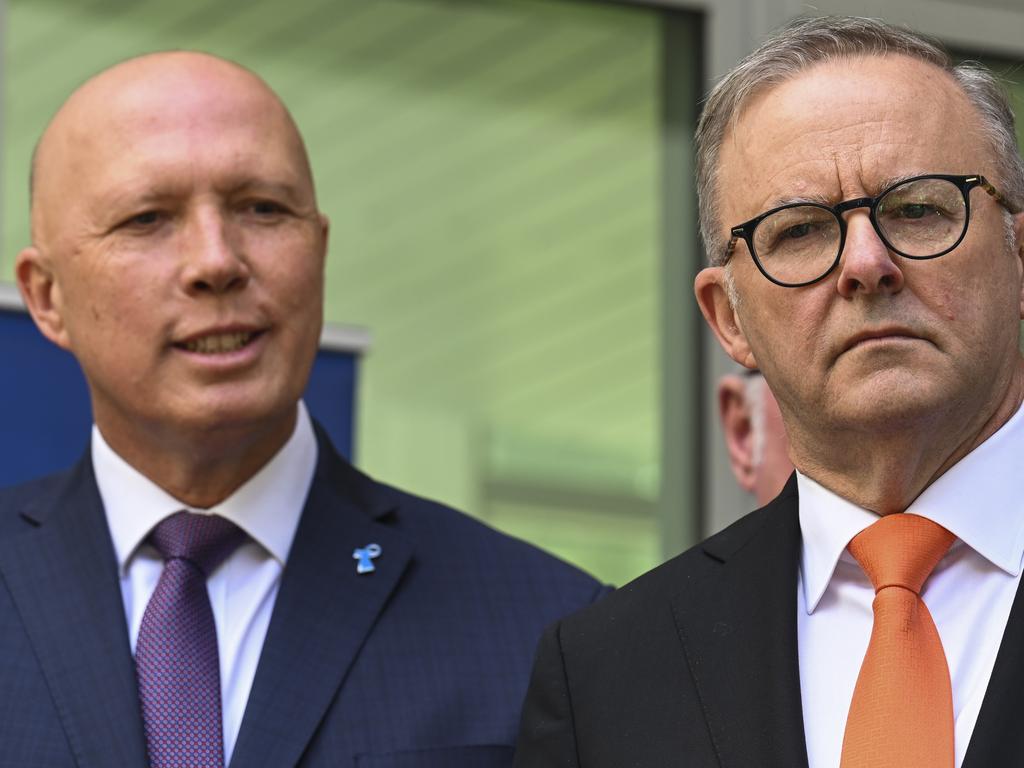Many more questions than answers before we even vote

As a long-serving public servant including as a chief executive of three government departments – the Department of Law and the Chief Minister’s Department in the Northern Territory and the Department of the Premier and Cabinet in Western Australia from 2008 to 2016 – my interest is in how a voice to parliament will work in practice, and when it will take full effect.
I was also cabinet secretary in the Howard government from 2003 to 2007, and cabinet secretary in the Morrison government up to the 2019 election. During the last appointment I was asked to reform the practice of state and federal government relations meetings (COAG) and established the protocols for the national cabinet which was created under Scott Morrison during the pandemic and has been retained by Anthony Albanese.
I have had a long involvement with the practical implementation of various policies involving Indigenous issues and rights. In WA, I developed proposals and directed negotiations on the South West Settlement on behalf of the Barnett government. This settlement is the first and largest of its kind.
In the NT, I was the principal adviser on development of sacred-sites legislation largely considered to be the most effective in the country. I also negotiated the establishment of the Nitmiluk (Katherine Gorge) Agreement under the control of the local Jawoyn community. I am primarily interested in how and when do you implement a Yes vote for a voice, and what are the impacts and risks for executive government.
In my view there will almost certainly be a hiatus before the legislated establishment of the voice, potentially extending for a number of years. The post-referendum hiatus is a direct consequence of leaving open questions about the construction and ambit of the voice to parliament before the referendum. The answer to these questions will be largely a matter for the bureaucracy, because they are the primary source of advice to government and must turn principle and policy into practice.

It’s reasonable to expect commonwealth and state and territory departments will be now assuming a Yes vote and will be reviewing how to implement and respond to it. They will be providing advice to their respective governments on constitutional, legal and administrative impacts, risks and challenges, and the practical impacts on government and parliament.
It is inconceivable they would not be doing this. It is the same duty of the public service as an election approaches and preparations have to be made for a change of government.
Assuming a Yes vote, an immediate challenge arises from an inevitable delay in the development of any legislation.
The commonwealth government has said that after a successful referendum it will consult with parliament, First Nation groups and others in advance of legislation to give effect to the Yes vote.
This involves consideration of a raft of legal and administrative matters. It could take up to three years to consult thoroughly, to draft legislation and to have it passed.
Then there’s a further possible delay to implement and activate the legislated voice. Set against the commonwealth government’s advocacy of a Yes vote, there will be an expectation that First Nation representatives will be able to make representations to executive government and parliament immediately, prior to the full legislated voice.
Indeed, given the framing of the referendum question, there is a risk that a failure to provide for interim arrangements may be unconstitutional. I expect agencies are taking that risk into account.
Regardless of constitutionality, any interim plan to give scope to the voice triggers questions along these lines:
• Will the parliament and/or the government make a series of interim appointments to the voice as a precursor to the legislation to allow the voice to commence dialogue in some form with governments and the community immediately?
• How will an interim voice bureaucracy relate to existing First Nation advisory arrangements at federal, state and territory, regional and local government levels?
• How will representatives to the voice be selected at a regional level?
• Will the states and territories, regional and local government mirror commonwealth government consultations with the voice?
• And, critically, what, if any, commitments has the government made to the voice advocates prior to the referendum? For example, will voice representatives be entitled to a place at national cabinet?
Apart from any interim approach, bureaucrats will be looking at the long-term operational impact on executive government. For example, which level of bureaucracy will support voice representatives and regional representatives? What might be the cost of consultations? Will funding be required to ensure voice representatives can get independent advice? Are there any models they can draw from in Australia or internationally? They’ll have to consider what support and funding their agencies will need. This list is virtually endless.
Then there is the question of the voice itself. While the government consults widely about how it will be structured, it’s assumed it will put forward optional proposals for debate. Again, the list is long:
How will appointments be made to a representative body? What authority will the body have? How will that body engage with their communities and vice versa? What bureaucratic support structures will be established to support representatives? Will there be regional agencies in each jurisdiction? Where will head office be? Who will be the CEO? Who will appoint staff? How will internal disputes between groups and representatives be resolved?
There is also the question of whether any support agency established to support the voice will be independent of the Australian public service, and whether Freedom of Information will apply to a support agency.
As MPs are not subject to FOI, will representatives be subject to FOI? Will the corruption commission and the Auditor-General’s office have authority to investigate the organisation? Are there to be any limits in relation to issues upon which representations can be made, and can limitations be made?
Little attention so far has been given to how the states, territories and local government conform with the voice. Is it feasible they continue down their voice or non-voice paths? Will they mirror the same processes as the commonwealth?
I’ve highlighted issues the government agencies will be considering. That’s the easy part. They will have to prepare briefs on the issues. The biggest risk to executive government is in how it responds to voice representations.
It’s true that governments consult with Indigenous interests all the time. But apart from a few areas, e.g. the Native Title Act 1993, the Northern Territory Land Rights Act 1975, and some cultural heritage and environmental protection legislation, it is not mandated.
What is proposed is a constitutionally entrenched right backed by legislation, and at this stage not limited or constrained (if it can be constrained). The Calma-Langton report refers to significant opposition to any limits.
All agencies must consider how they will address voice representations and the structures and operational plans to allow that to happen effectively. The Calma-Langton report indicates they want early input on policy development.
Changes to cabinet procedures to reflect the need for voice representations must be drafted and reviewed. This would include how the voice makes representations direct to cabinet and its committees, as well as how to ensure representations can be made to intergovernmental and interdepartmental committees.
An incentive for government bodies will be their awareness that failure to have effective arrangements in place will involve administrative law challenges.
The administrative law arena is where the highest risk exists in relation to the operations of executive government, both before and after parliament has legislated.
Failure to provide adequate time for consideration of representations or input on issues runs the risk of administrative appeal.
Coupled with the huge demands placed on agencies to provide for representations, this will put day-to-day operations of government at risk.
A number of scenarios of expected requests and demands, as well as the requirements of a constitutional right, highlight how complex constitutionally entrenched representations to executive government on any issue will become.
My conclusion is that a constitutionally entrenched voice to executive government is unworkable. A legislatively entrenched voice, unless limited to a few specific issues, would also be unworkable and there are serious doubts limits can be imposed. I am sure the voice proponents would object to limits.
The bureaucracy won’t take a risk and will assume everything is in.
As for a constitutionally entrenched voice to parliament, that may be workable, subject to constraints to ensure executive government is not exposed to voice representations by default.
But if it’s said to be non-justiciable, I’d want to ensure government seeks legal advice to support that view, and any advice to the contrary. And if they don’t wish to make that advice public, they should provide it at least to the federal opposition.
I have a unique perspective on this issue from the point of practical public-service implementation of principles and policy, and the dangers involved in insufficient preparation for potentially dramatic change to Australian government at all levels.






Debate about the pending voice referendum has largely overlooked the impact of a successful referendum on the operations of parliament and, more importantly, executive government.